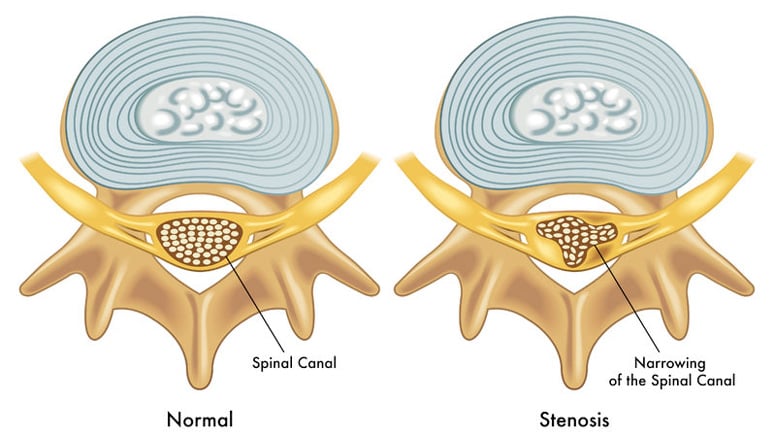What Is a Spinal Stenosis?

Spinal stenosis is also called spinal narrowing; it occurs when the spaces inside the spine become very narrow and, as a result exerting pressure on the nerves within the spine and spinal cord, back pain, and sciatica. It mostly occurs as cervical spinal stenosis (neck) and lumbar spinal stenosis (lower back) and is mostly caused by age-related stretching.
Spinal stenosis mostly worsens slowly over a period; because of this, it does not show any symptoms for a very long period even when changes have been observed on x-rays or other imaging tests; depending on the severity of the spinal stenosis, symptoms when present appear as pain, muscle fatigue [1], tingling, and numbness, symptoms also tend to worsen over time.
The treatment given to patients with spinal stenosis depends on the factors responsible for the symptoms present, where the stenosis is located, and how complicated the symptoms are. Mild symptoms can be taken care of by the patient with methods recommended by doctors while they observe. If no improvement is observed and the symptoms exacerbate, drugs, physical therapy, and surgery are recommended.
Treatment for spinal stenosis are;













